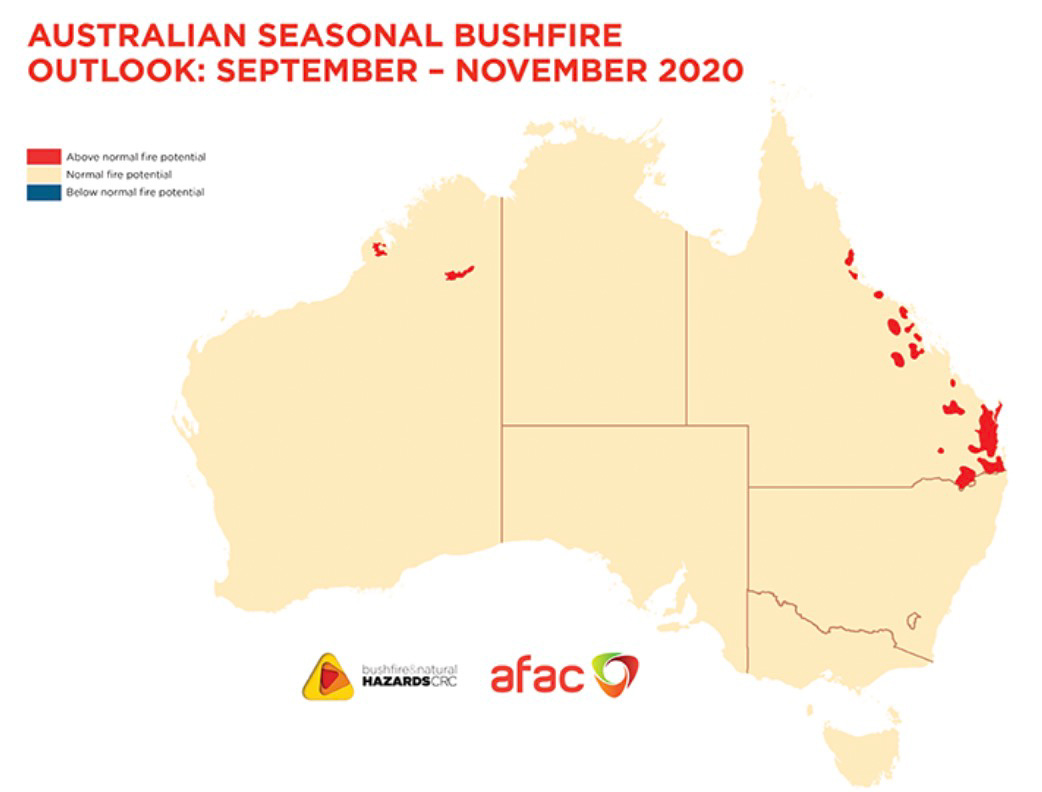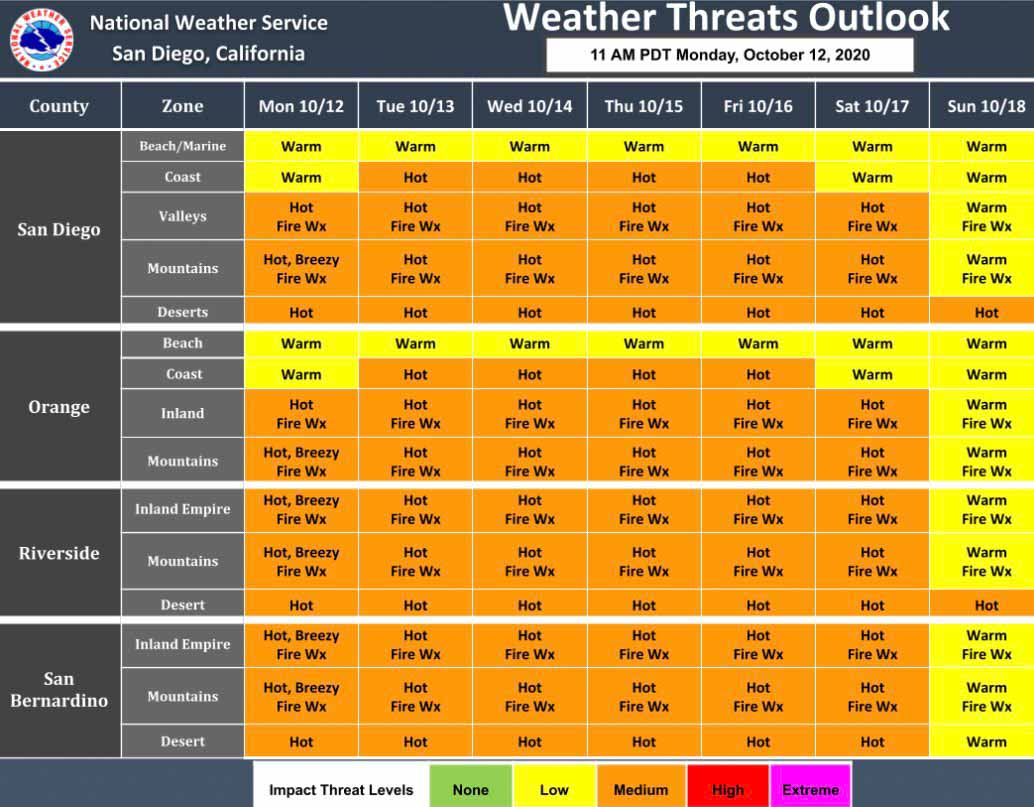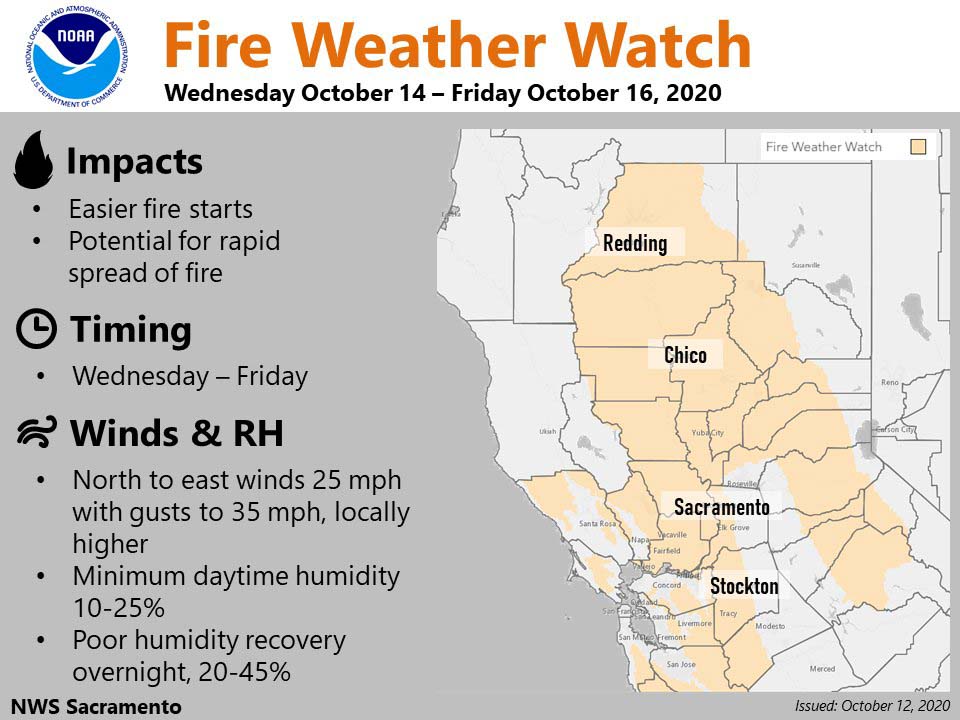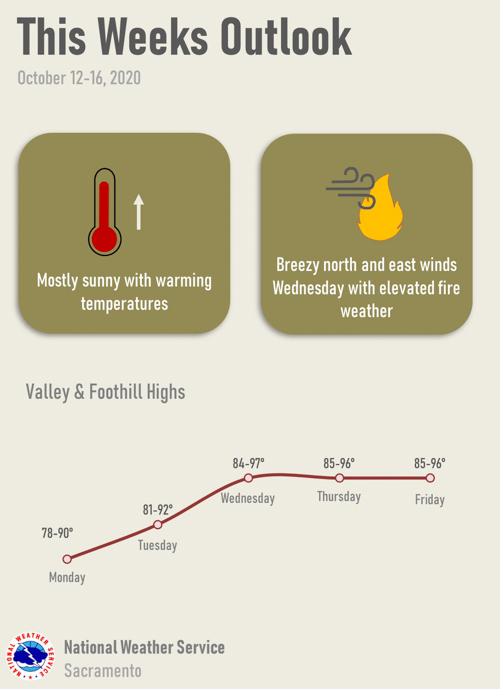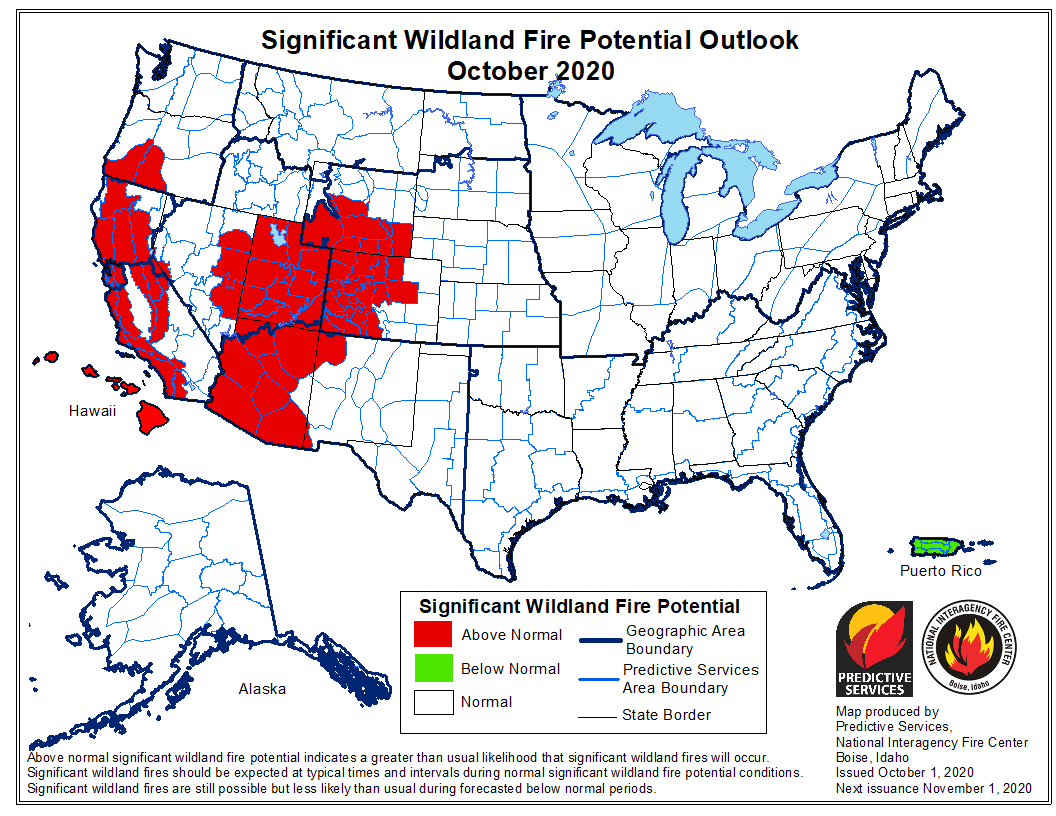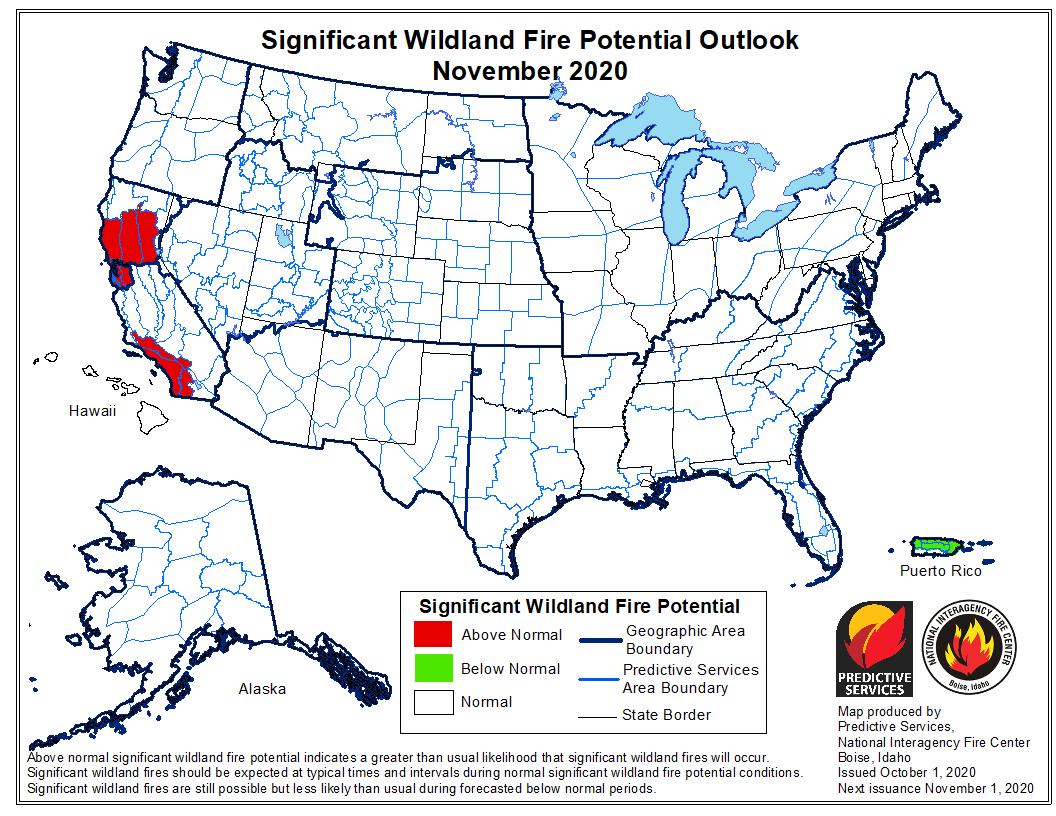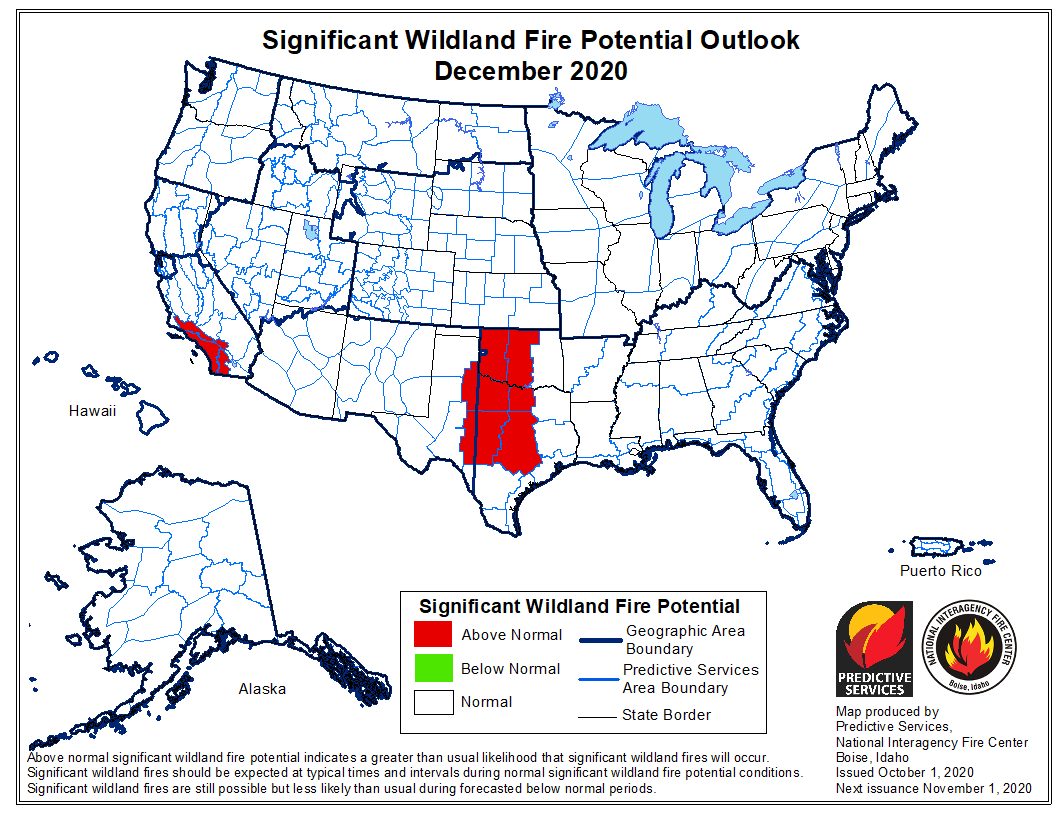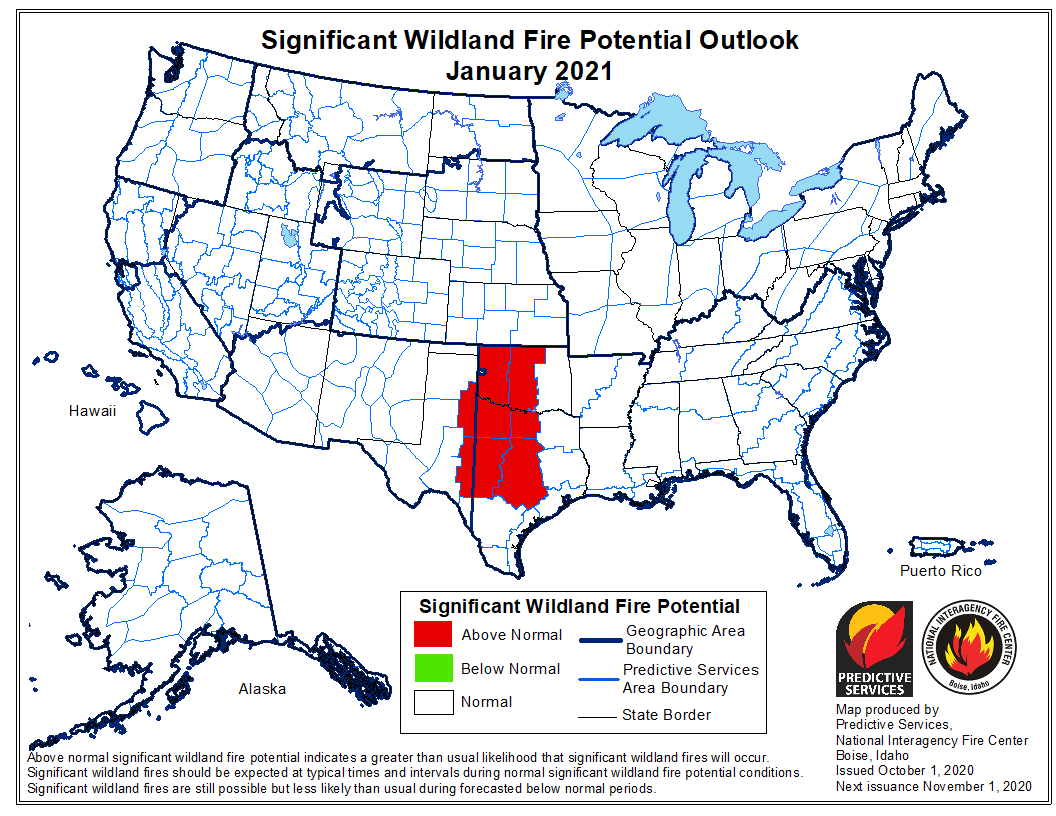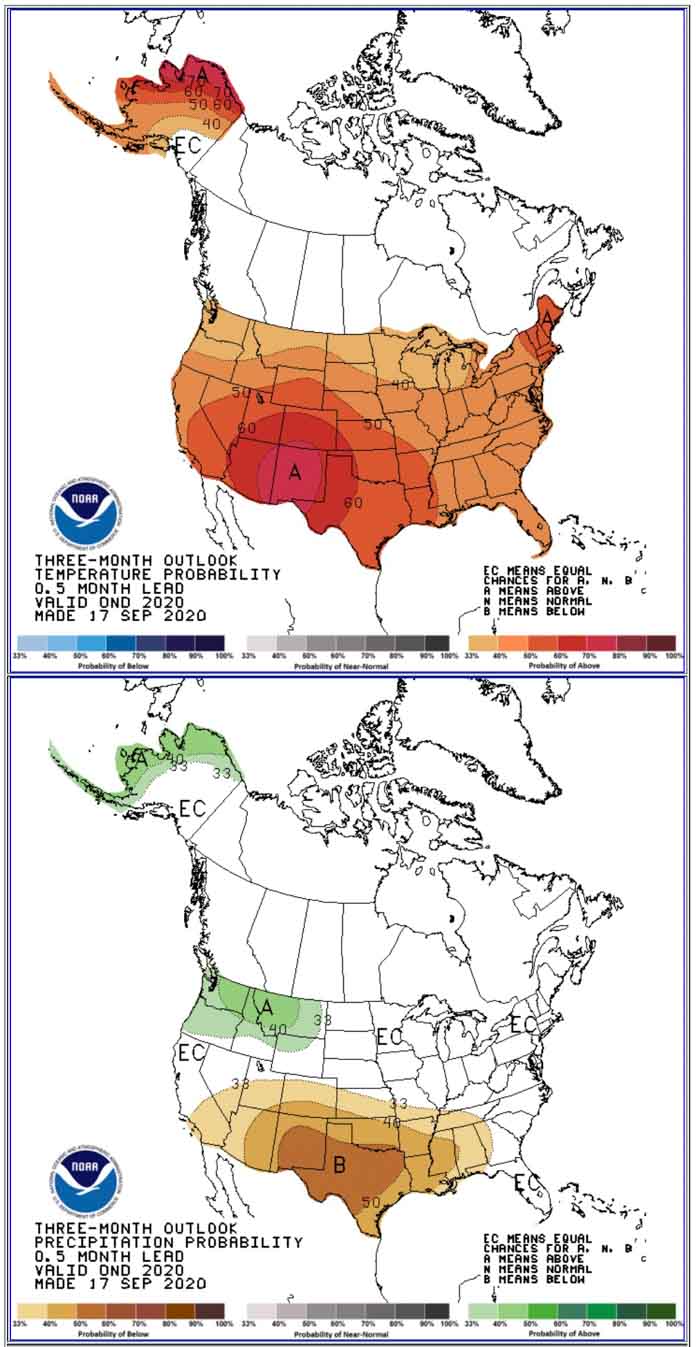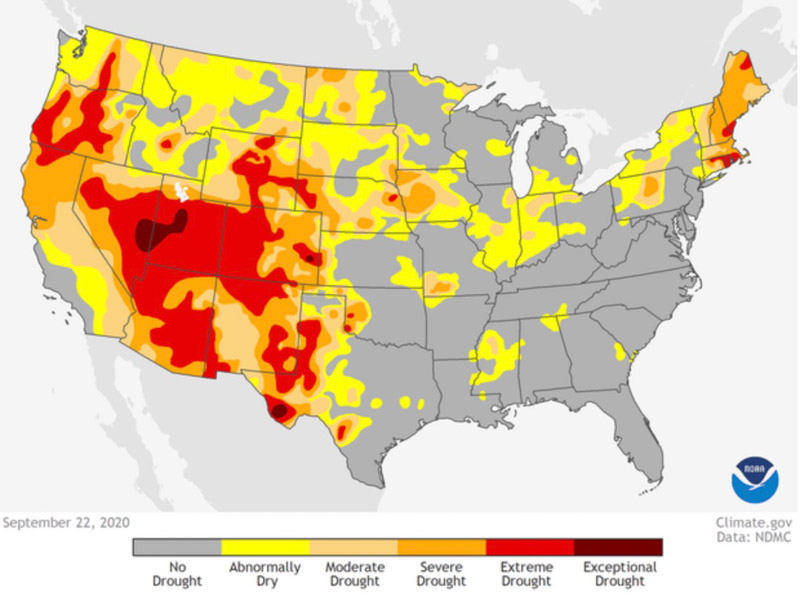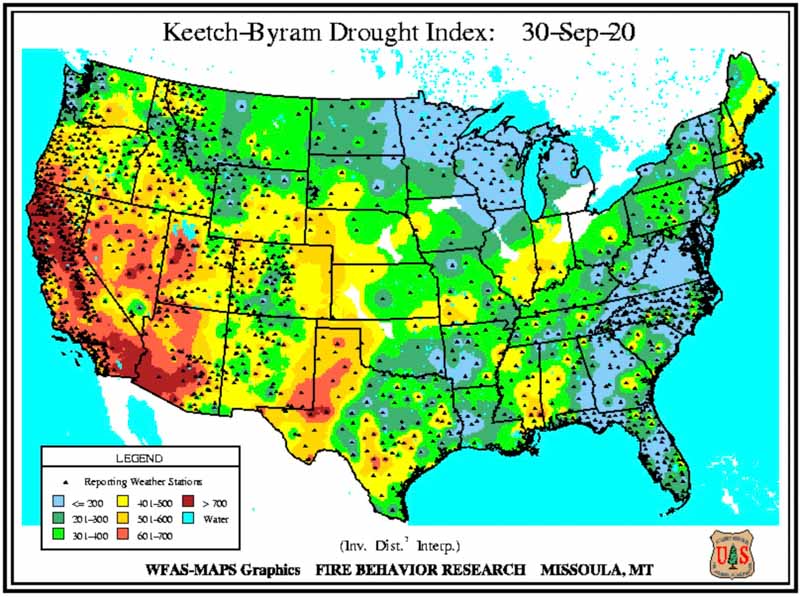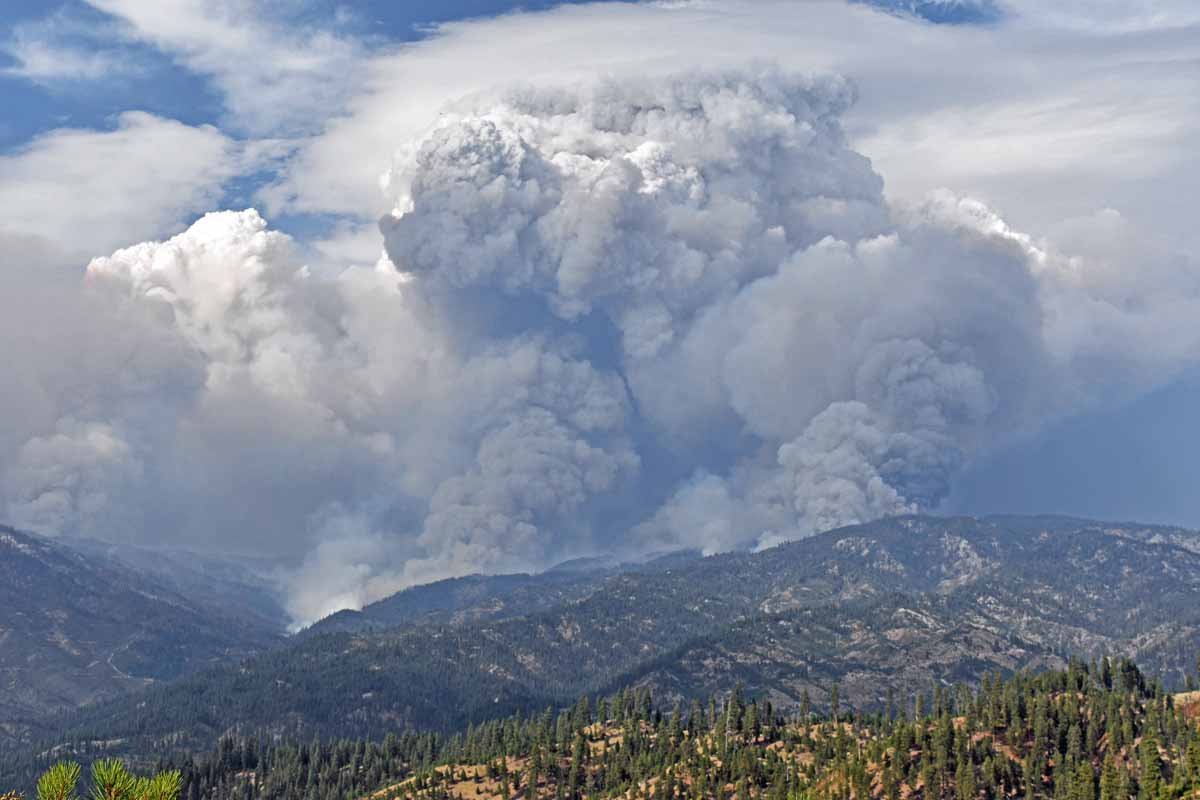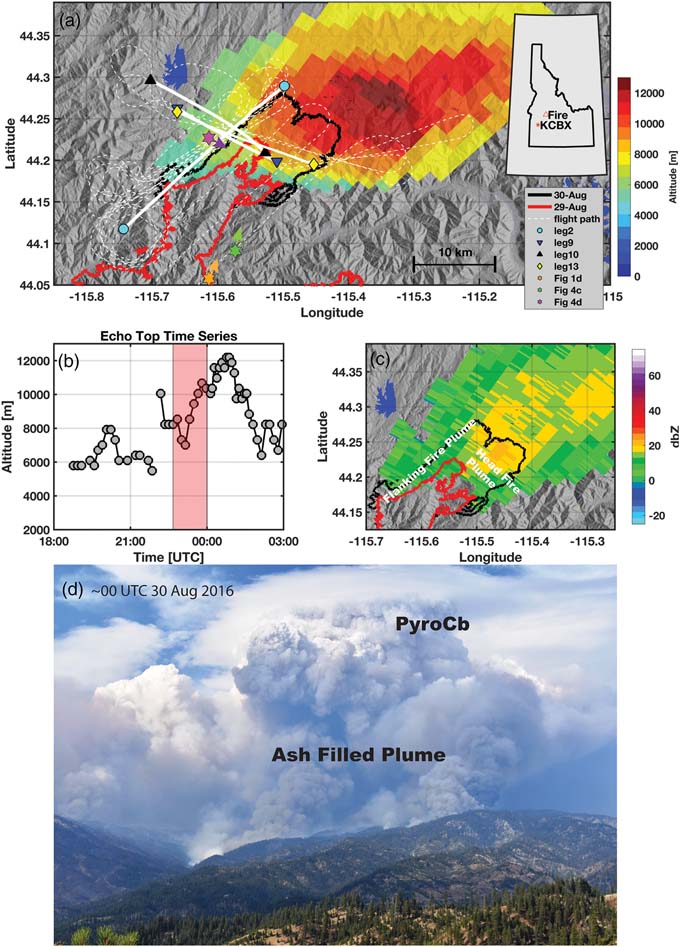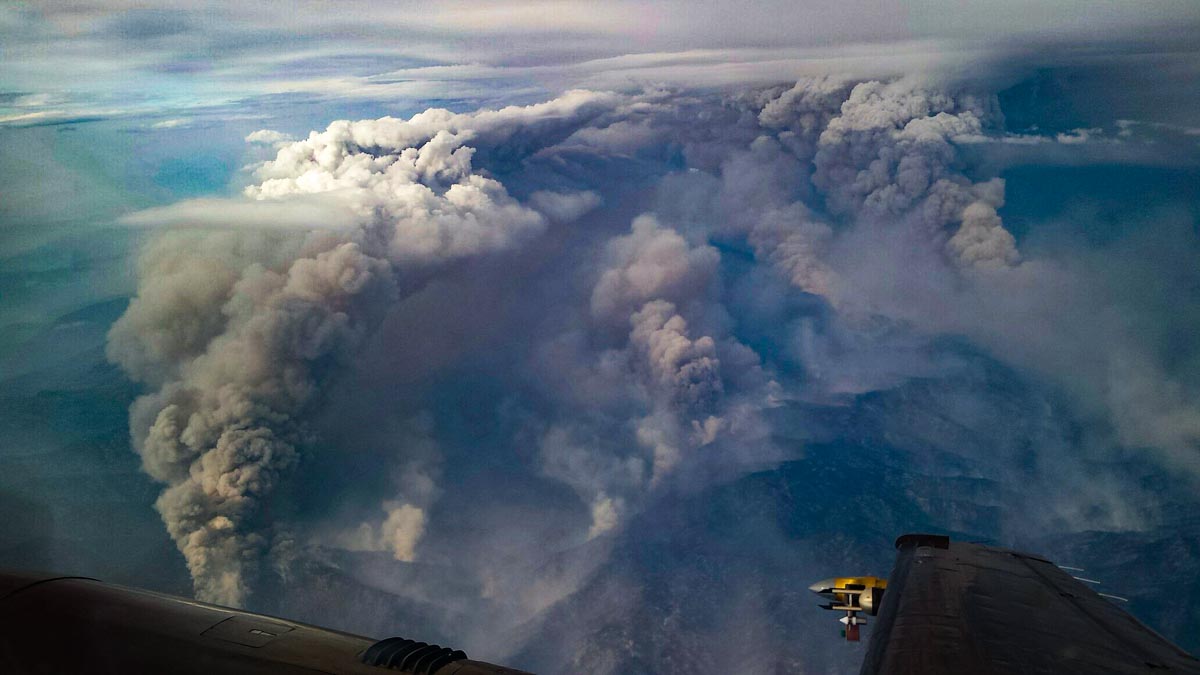October 24, 2020 | 6:46 p.m. PDT
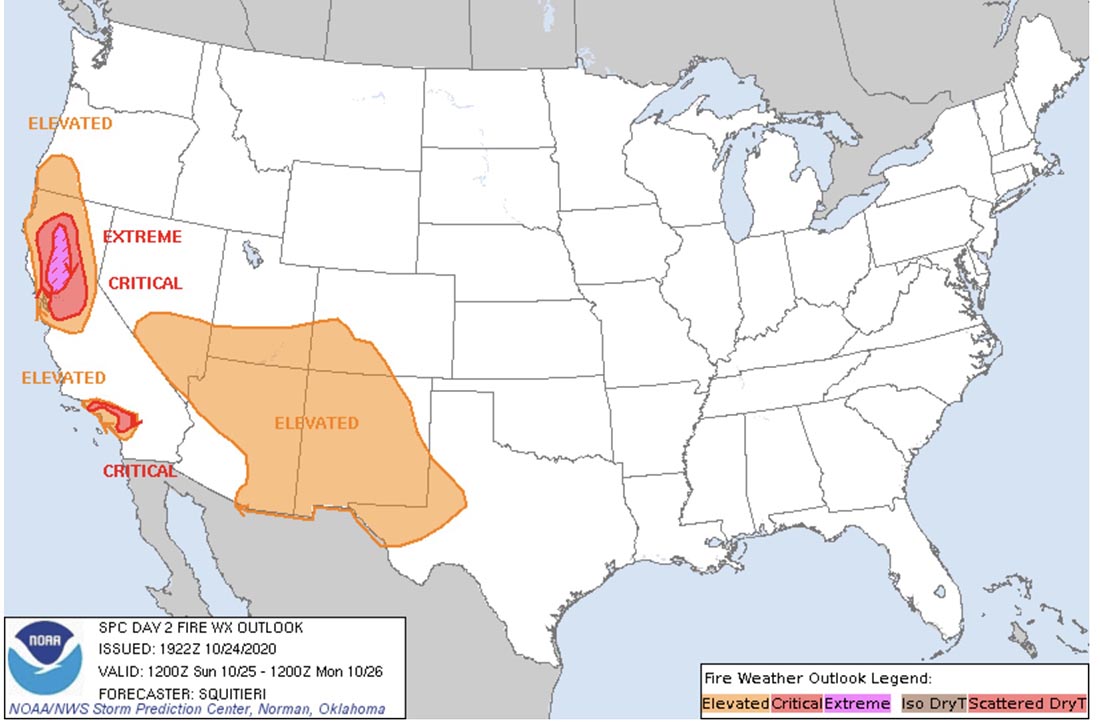
A major weather event that will affect wildland fire danger begins in California Sunday morning. NOAA’s Storm Prediction Center does not often predict extreme fire weather, but they have done just that to warn of a wind event with very low humidities for parts of California Sunday through Tuesday. At times the wind will be very strong and the relative humidity will drop below five percent in some locations.
Check out the forecast for Red Bluff in Northern California — on Sunday, 29 mph north winds with gusts to 40, and 10 percent relative humidity. On Monday, 18 gusting to 25 with 5 percent RH.
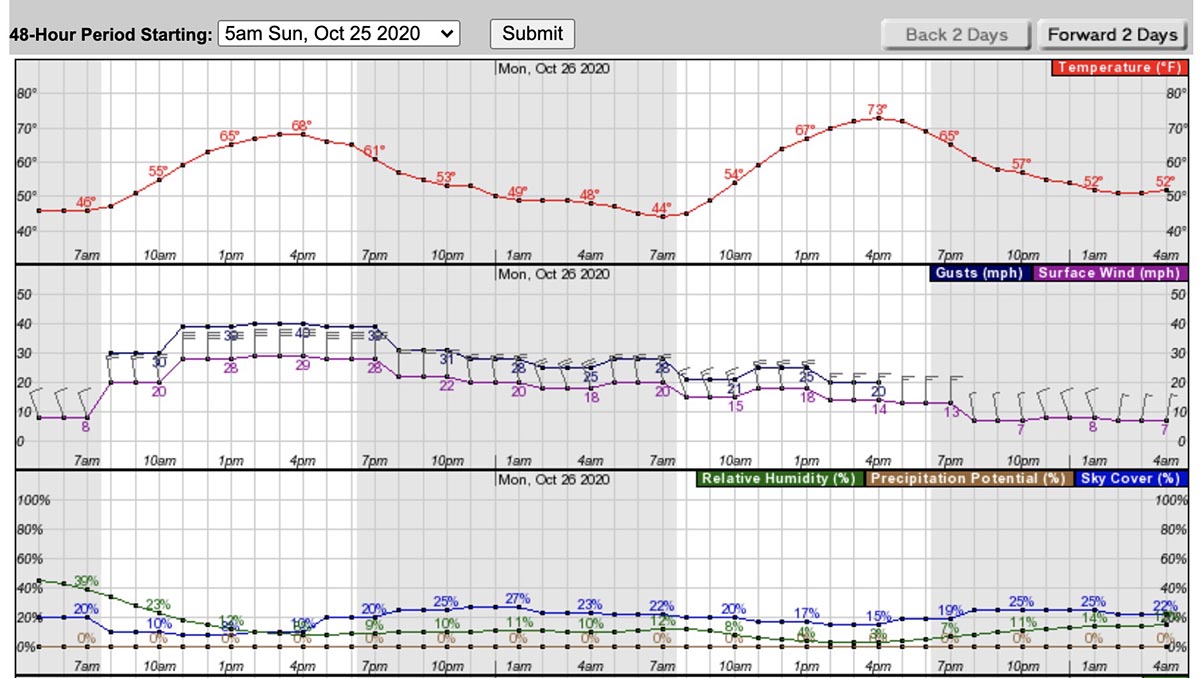
The extreme weather will begin in Northern California on Sunday then work its way to the southern part of the state on Monday and Tuesday.
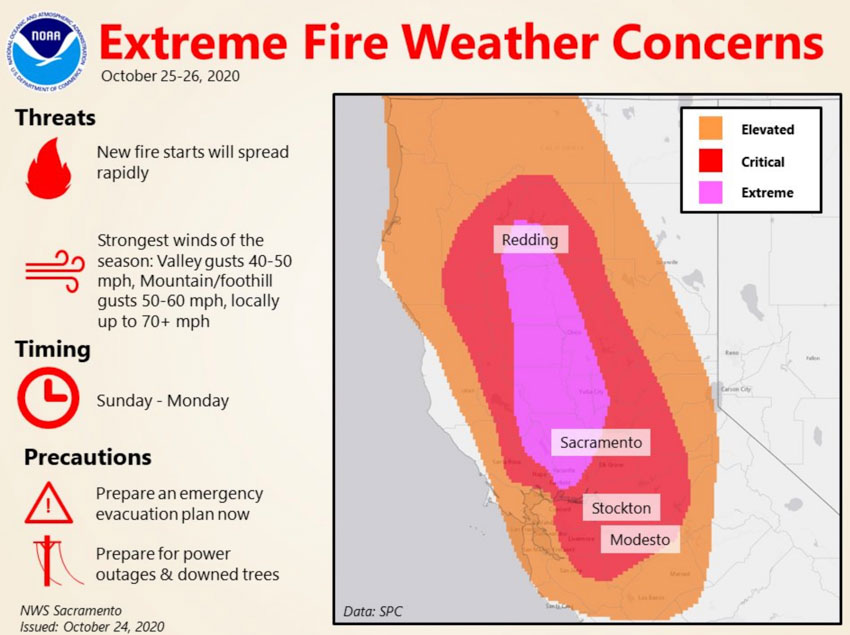
The forecast for Riverside in Southern California beginning early Monday morning: 26 to 30 mph north winds gusting to 45, with 8 percent RH; then Tuesday, 18 to 20 mph gusting to 30 with 10 percent RH.

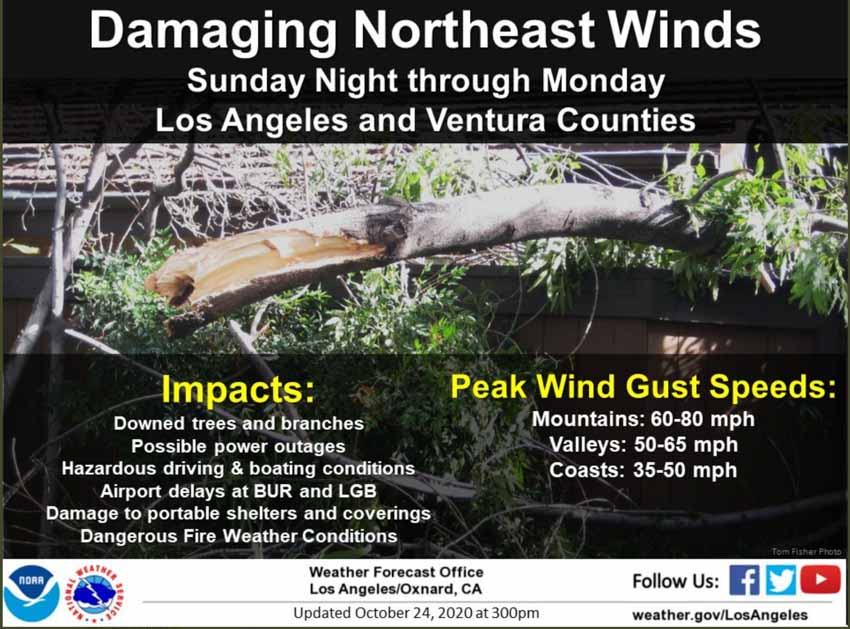
With five to nine inches of snow beginning tonight on three fires in Colorado, I wonder if they can spare any crews or overhead personnel in case they are needed in California? Of course the 192,000-acre East Troublesome Fire after burning for 11 days only has 5 crews and 336 personnel, but the 206,000-acre Cameron Peak Fire next door has 42 crews and 1,903 personnel. The 10,000-acre Calwood Fire that has not spread for days now has snow, 10 crews, and 495 personnel. The National Multi-Agency Coordinating Group may have already made decisions along these lines.
As we wrote earlier today, of the 113 Interagency Hotshot Crews in the U.S., only about 35 are still funded and available for fighting fire. In two weeks that number drops to around 13 according to projections in a September 30, 2020 planning document compiled by an Area Command Team (ACT).

